This article was co-authored by R. Sonia Batra, MD, MSc, MPH. Dr. R. Sonia Batra is a board certified Dermatologist and the Founder of Batra Dermatology based in Los Angeles, California. With over 15 years of experience, Dr. Batra specializes in lasers, medical devices, patient and public medical education, and skin cancer research. She received her Bachelor’s degree, Master’s degree in Public Health, and her Doctor of Medicine (MD) degrees from Harvard University. As a Rhodes Scholar, she earned a Master’s degree in Molecular Genetics at the University of Oxford. She completed her residency training in Dermatology at Stanford University. Dr. Batra has contributed and reviewed for the Journal of Dermatologic Surgery, the Journal of the American Academy of Dermatology, and JAMA Dermatology. She is also a co-host of CBS’ Emmy award-winning television show, The Doctors.
There are 15 references cited in this article, which can be found at the bottom of the page.
wikiHow marks an article as reader-approved once it receives enough positive feedback. In this case, 100% of readers who voted found the article helpful, earning it our reader-approved status.
This article has been viewed 398,830 times.
A keloid, or keloid scar, is a skin growth that occurs when a person's body creates too much scar tissue after an injury.[1] Don't confuse keloids with hypertrophic scars which have some similarities, but don't grow outside the bounds of the wound that caused them. Keloids are not dangerous, but for many people they are a cosmetic nuisance. Keloids can be tough to treat, so the best option is to prevent them in the first place, but there are a number of medical treatments available that can help reduce or even remove keloids.
Steps
Seeking Medical Treatment
-
1Talk to your doctor about cortisone injections. A series of cortisone injections administered to the keloid every four to eight weeks by a doctor can usually shrink the size of the keloid and make it flatter.[2] However, sometimes they can cause the keloid to become darker in color.[3]
- Interferon is another kind of injection that is being studied for the treatment of keloids, and may be an option for you.
-
2Consider cryotherapy for your keloid. Cryotherapy is a very effective treatment for keloids, and can shrink them significantly. In cryotherapy, liquid nitrogen is applied to the keloid to freeze away the excess cells.[4] Cryotherapy only takes a few minutes and can usually be done in your doctor's office. Several treatments spaced several weeks apart may be needed to fully remove the keloid.[5]Advertisement
-
3Ask your dermatologist about laser therapy. Laser therapies for keloids are relatively new and have not been studied as much as other treatment options, but they show promise of minimizing or healing keloids.[6] Different kinds of laser treatments work better on different skin types, and on different types of keloids. Ask your dermatologist if she thinks laser treatment might be right for you.[7]
-
4Consider having your keloid scar surgically removed. Doctors are reluctant to remove keloids surgically, because there is a high chance of additional scar tissue forming at the site. However, in some cases it may be helpful or necessary.[8]
- If you have a keloid surgically removed, be sure to follow all of the after-care instructions carefully to prevent a new keloid from forming.
-
5Talk to your doctor about radiation therapy. It sounds extreme, but radiation has been effectively used for over a century to treat keloids, often in combination with surgery or other treatments. Despite concerns over an increase in cancer risk, a recent study indicates that radiation remains a safe option if appropriate precautions (protecting cancer-prone tissues) are made.[9]
- Radiation treatments are usually outpatient procedures performed at your local hospital under the care of a trained radiologist.
Treating Keloids at Home
-
1Use care when attempting at-home remedies for keloids. Safe remedies to shrink keloids include pressure (silicon pads) and the application of healing substances. Do not try to physically remove or shrink a keloid yourself by cutting, sanding, constricting it with string or rubber bands, or using any other method that traumatizes the skin. Not only are you likely to see additional scar tissue form at the site, you can also put yourself at serious risk for infection.
-
2Apply Vitamin E to the keloid. Vitamin E has been shown to help scars heal, prevent keloids, and may help shrink existing keloids. Apply Vitamin E oil or cream to the scar twice daily, morning and night for 2-3 months.[10]
- Vitamin E oil can be bought in health food stores, and many major grocery stores.
- You can also purchase Vitamin E capsules, and cut them open and squeeze the oil onto the scar. Each capsule should be good for a few applications.
-
3Use silicone gel sheets to treat existing keloids, and prevent new ones from forming. Silicon gel sheets or "scar sheets" are self-adhesive, reusable sheets that are applied to an injury site to prevent scars, or on existing scars and keloids to reduce their size and appearance.[11] Silicon sheets should be worn over the injury site or on the existing keloid for at least 10 hours per day for several months.[12]
- Silicon gel sheets are sold under names such as "ScarAway," and can be bought at most pharmacies and many online retailers.
-
4Use a topical scar ointment to heal a keloid. There are a number of new topical treatments for healing scars that may visibly diminish keloids. The active ingredient in many of these treatments is silicone. Look for a product labeled "scar cream" or "scar gel" and apply as directed.[13]
Preventing Keloids
-
1Understand the importance of prevention. The best way to deal with keloids is to avoid getting them in the first place. People who already have keloids, or who are very prone to getting them, can take special precautions with skin injuries to prevent keloid scars from forming.[14]
-
2Take care of skin injuries to prevent infection and scarring. Pay attention to even minor skin injuries, and make sure that any wounds are thoroughly cleaned. Apply an antibiotic cream and bandage to any open wounds, and change the bandage frequently.[15]
- Wear loose clothing over the injury site that will not irritate the skin further.
- The silicon gel sheets mentioned above work well to prevent keloids from forming.
-
3Avoid trauma to your skin if you are prone to forming keloids. Piercings and even tattoos can lead to keloids in some individuals. If you have developed keloids in the past, or have a family history of keloids in your family, you may want to avoid piercings and tattoos, or consult with a dermatologist before proceeding.[16]
Understanding Keloids
-
1Learn how keloids form. Keloids are raised scars that can form anywhere on the body where the skin has been injured. They form when the body creates excess collagen (a kind of scar tissue) at the injury site. The skin injury may be large and obvious, like a surgery incision or burn, or small like a bug bite or pimple. Keloids usually begin to develop around three months after the original injury, and can continue to grow for weeks or even months.[17]
- Ear piercings and tattoos can lead to keloids in some people.
- Usually keloids form on the chest, shoulders, and upper back.
-
2Learn what a keloid looks like. Keloids are usually raised and rubbery in appearance, with a smooth, shiny surface. The shape of the keloid usually follows the shape of the injury, but over time keloids can grow beyond the original injury site. Keloids can vary in color from silvery to flesh-tone to red or dark brown.[18]
- Keloids are generally not painful, but can cause an itching or burning sensation for some people.
- While keloids aren't dangerous, it is important to have them looked at by a doctor to make sure they aren't a more serious skin condition.
-
3Know if you are at risk for developing keloids. Some people are more likely than others to develop keloids, and if you have had one keloid scar appear, you are likely to develop more in the future. If you know you are at risk, you may want to take special care of skin injuries to prevent keloids from forming.[19]
- People with darker skin tones are more likely to develop keloids.
- People younger than 30 are at a higher risk, especially teenagers experiencing puberty.
- Pregnant women are more likely to develop keloids.
- People with a history of keloids in their family are also at a higher risk.
-
4Have a suspected keloid examined by a doctor. It is very important to have a suspected keloid examined by a doctor to make sure that it is not something more serious. In some cases, the doctor may be able to visually diagnose the keloid. In others, the doctor may wish to take a biopsy of the tissue and have it screened to rule out cancer.[20]
- Most effective treatments for keloids are done under a doctor's care, and early treatment is often the key to success.
- A skin biopsy is a simple procedure, in which the doctor removes a small sample of skin tissue and sends it to a lab to be analyzed under a microscope. It can often be done in the doctor's office at the time of your visit.[21]
Expert Q&A
-
QuestionHow do I flatten a keloid?
 R. Sonia Batra, MD, MSc, MPHDr. R. Sonia Batra is a board certified Dermatologist and the Founder of Batra Dermatology based in Los Angeles, California. With over 15 years of experience, Dr. Batra specializes in lasers, medical devices, patient and public medical education, and skin cancer research. She received her Bachelor’s degree, Master’s degree in Public Health, and her Doctor of Medicine (MD) degrees from Harvard University. As a Rhodes Scholar, she earned a Master’s degree in Molecular Genetics at the University of Oxford. She completed her residency training in Dermatology at Stanford University. Dr. Batra has contributed and reviewed for the Journal of Dermatologic Surgery, the Journal of the American Academy of Dermatology, and JAMA Dermatology. She is also a co-host of CBS’ Emmy award-winning television show, The Doctors.
R. Sonia Batra, MD, MSc, MPHDr. R. Sonia Batra is a board certified Dermatologist and the Founder of Batra Dermatology based in Los Angeles, California. With over 15 years of experience, Dr. Batra specializes in lasers, medical devices, patient and public medical education, and skin cancer research. She received her Bachelor’s degree, Master’s degree in Public Health, and her Doctor of Medicine (MD) degrees from Harvard University. As a Rhodes Scholar, she earned a Master’s degree in Molecular Genetics at the University of Oxford. She completed her residency training in Dermatology at Stanford University. Dr. Batra has contributed and reviewed for the Journal of Dermatologic Surgery, the Journal of the American Academy of Dermatology, and JAMA Dermatology. She is also a co-host of CBS’ Emmy award-winning television show, The Doctors.
Board Certified Dermatologist Talk to your doctor about cortisone shots since they can help reduce the appearance of a keloid.
Talk to your doctor about cortisone shots since they can help reduce the appearance of a keloid. -
QuestionI have two keloids on my chest. I have tried injections but that didn't work. What should I do?
 Chris M. Matsko, MDDr. Chris M. Matsko is a retired physician based in Pittsburgh, Pennsylvania. With over 25 years of medical research experience, Dr. Matsko was awarded the Pittsburgh Cornell University Leadership Award for Excellence. He holds a BS in Nutritional Science from Cornell University and an MD from the Temple University School of Medicine in 2007. Dr. Matsko earned a Research Writing Certification from the American Medical Writers Association (AMWA) in 2016 and a Medical Writing & Editing Certification from the University of Chicago in 2017.
Chris M. Matsko, MDDr. Chris M. Matsko is a retired physician based in Pittsburgh, Pennsylvania. With over 25 years of medical research experience, Dr. Matsko was awarded the Pittsburgh Cornell University Leadership Award for Excellence. He holds a BS in Nutritional Science from Cornell University and an MD from the Temple University School of Medicine in 2007. Dr. Matsko earned a Research Writing Certification from the American Medical Writers Association (AMWA) in 2016 and a Medical Writing & Editing Certification from the University of Chicago in 2017.
Family Medicine Physician You need to seek out the attention of a surgeon. If you already have tried to inject them and this is not working for you then you may have to have them surgically removed.
You need to seek out the attention of a surgeon. If you already have tried to inject them and this is not working for you then you may have to have them surgically removed. -
QuestionAre there any foods that prevent keloids?
 Chris M. Matsko, MDDr. Chris M. Matsko is a retired physician based in Pittsburgh, Pennsylvania. With over 25 years of medical research experience, Dr. Matsko was awarded the Pittsburgh Cornell University Leadership Award for Excellence. He holds a BS in Nutritional Science from Cornell University and an MD from the Temple University School of Medicine in 2007. Dr. Matsko earned a Research Writing Certification from the American Medical Writers Association (AMWA) in 2016 and a Medical Writing & Editing Certification from the University of Chicago in 2017.
Chris M. Matsko, MDDr. Chris M. Matsko is a retired physician based in Pittsburgh, Pennsylvania. With over 25 years of medical research experience, Dr. Matsko was awarded the Pittsburgh Cornell University Leadership Award for Excellence. He holds a BS in Nutritional Science from Cornell University and an MD from the Temple University School of Medicine in 2007. Dr. Matsko earned a Research Writing Certification from the American Medical Writers Association (AMWA) in 2016 and a Medical Writing & Editing Certification from the University of Chicago in 2017.
Family Medicine Physician No, there are not food that will prevent keloids.
No, there are not food that will prevent keloids.
Warnings
- Always see a doctor if you notice a new skin growth, or if an old scar or bump begins to change. It may be a harmless keloid, but it's better to be safe than sorry!⧼thumbs_response⧽
References
- ↑ https://medlineplus.gov/ency/article/000849.htm
- ↑ R. Sonia Batra, MD, MSc, MPH. Board Certified Dermatologist. Expert Interview. 19 February 2021
- ↑ https://www.aad.org/public/diseases/a-z/keloids-treatment
- ↑ R. Sonia Batra, MD, MSc, MPH. Board Certified Dermatologist. Expert Interview. 19 February 2021
- ↑ https://familydoctor.org/condition/keloids/
- ↑ R. Sonia Batra, MD, MSc, MPH. Board Certified Dermatologist. Expert Interview. 19 February 2021
- ↑ https://nyulangone.org/conditions/scars-keloids/treatments/medical-treatment-for-scars-keloids
- ↑ https://www.nhs.uk/conditions/keloid-scars/
- ↑ http://www.ncbi.nlm.nih.gov/pubmed/19935303
- ↑ http://www.ncbi.nlm.nih.gov/pubmed/7591421
- ↑ R. Sonia Batra, MD, MSc, MPH. Board Certified Dermatologist. Expert Interview. 19 February 2021
- ↑ http://www.ncbi.nlm.nih.gov/pubmed/11442615
- ↑ https://www.aafp.org/afp/2009/0801/p253.html
- ↑ https://www.aad.org/public/diseases/a-z/keloids-self-care
- ↑ https://www.aad.org/public/diseases/a-z/keloids-self-care
- ↑ https://www.aad.org/public/diseases/a-z/keloids-self-care
- ↑ https://patient.info/skin-conditions/keloid-leaflet
- ↑ https://www.aad.org/public/diseases/a-z/keloids-symptoms
- ↑ https://www.aafp.org/afp/2009/0801/p253.html
- ↑ https://www.aad.org/public/diseases/a-z/keloids-treatment
- ↑ https://my.clevelandclinic.org/health/diagnostics/15458-biopsy-overview
About This Article
To heal a keloid, try applying vitamin E oil or cream to the area twice daily for 2-3 months, which can help shrink the scar. You can also wear a silicon gel sheet over the keloid for 10 hours per day for several months to reduce its size and appearance. Alternatively, you can apply a topical scar ointment to your keloid to help it fade. If at-home remedies aren't enough, talk to your doctor, who may recommend cortisone injections, cryotherapy, or laser therapy. For more advice from our Medical co-author, like how to prevent keloids, scroll down!


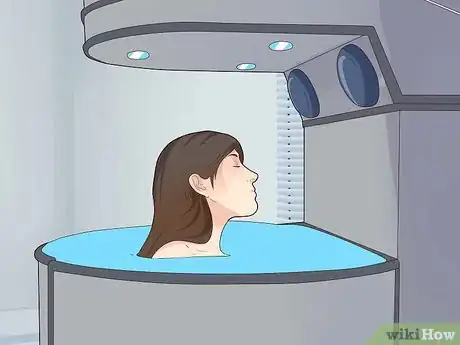
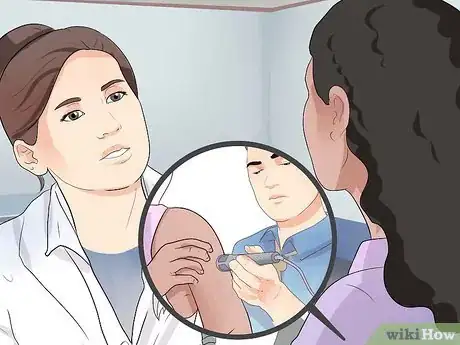
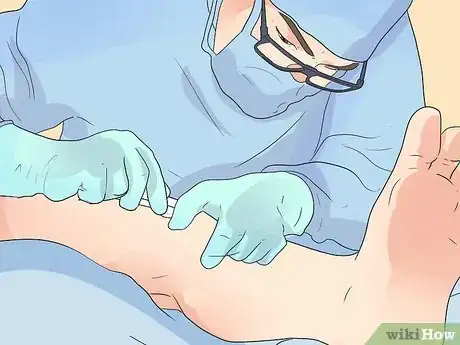
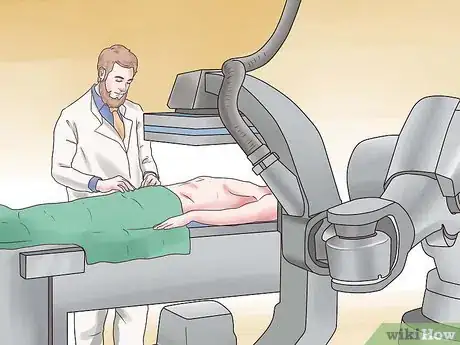
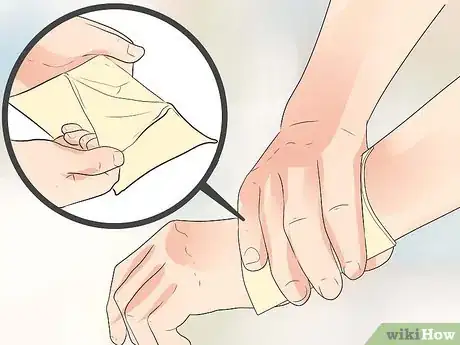
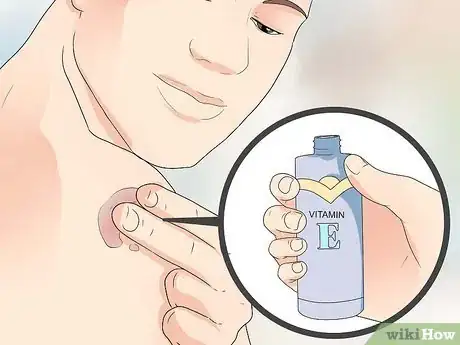

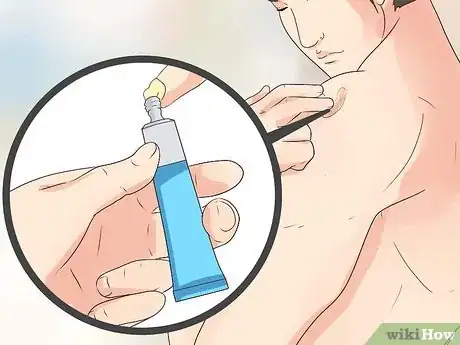
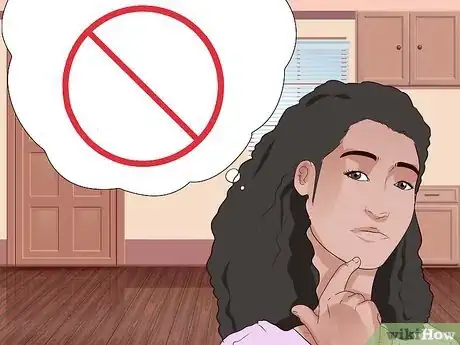

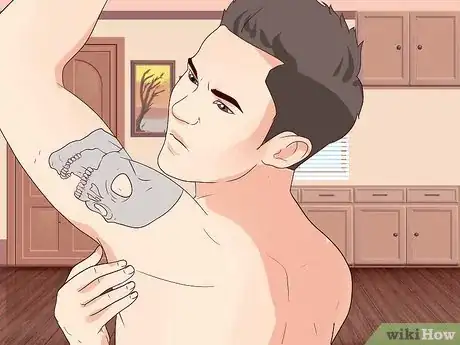

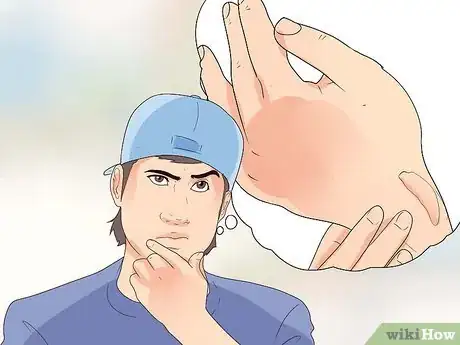
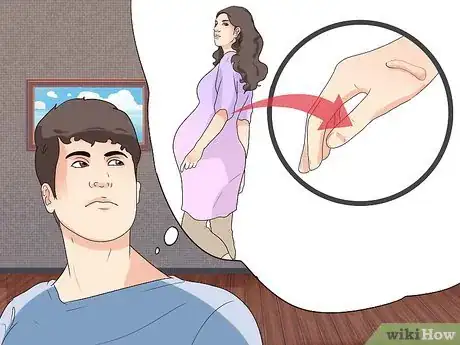
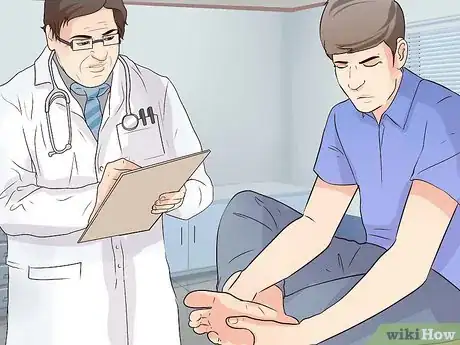

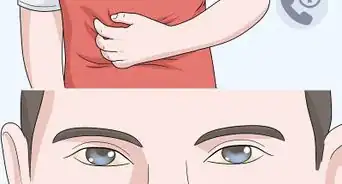
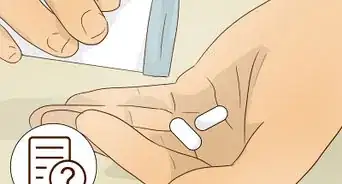

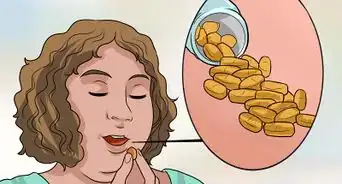
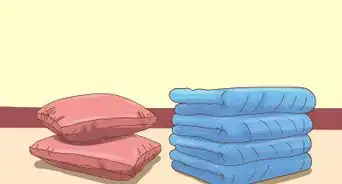

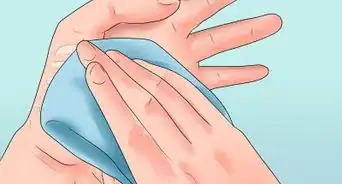
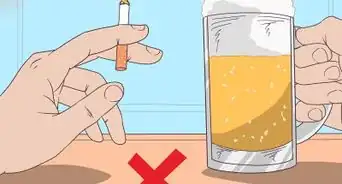
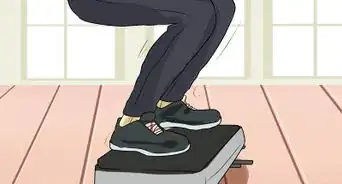
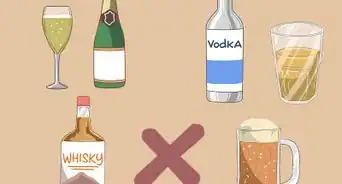
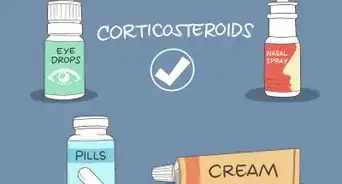
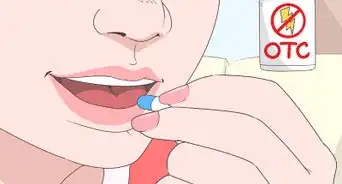
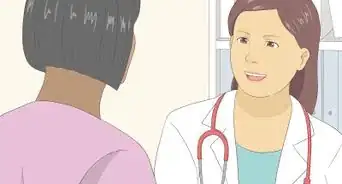










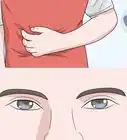
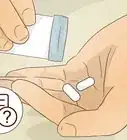




































Medical Disclaimer
The content of this article is not intended to be a substitute for professional medical advice, examination, diagnosis, or treatment. You should always contact your doctor or other qualified healthcare professional before starting, changing, or stopping any kind of health treatment.
Read More...